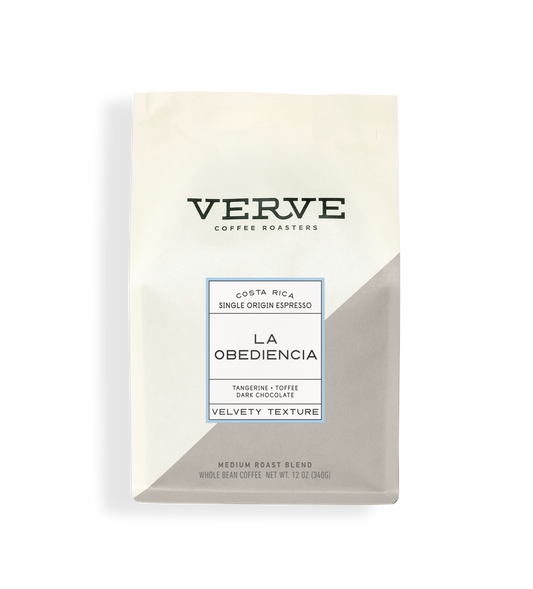How SOE Single Origin Espresso Enhances Your Wake-Up Brew
How SOE Single Origin Espresso Enhances Your Wake-Up Brew
Blog Article
Coffee Beans 101: Everything You Required to Understand About Espresso and Blended Coffee Beans
When it pertains to coffee, comprehending the nuances of espresso and mixed beans can transform your everyday mug. You'll find the distinctive features of Arabica and Robusta beans, and just how each effects taste and caffeine material. From the expanding process to toasting strategies, every step contributes in your coffee experience. So, what makes the best brew? Let's check out the necessary components that contribute to an exceptional mug of coffee.
Recognizing Coffee Beans: Types and Varieties
When diving into the world of coffee, recognizing the kinds and varieties of coffee beans is necessary for every fanatic. Arabica beans are understood for their smooth, complicated tastes and reduced caffeine content, making them a preferred amongst coffee connoisseurs.
Within these varieties, you'll find numerous regional ranges, each bringing unique characteristics. Ethiopian Yirgacheffe offers bright floral notes, while Colombian beans provide a well-balanced flavor profile. As you explore, remember to take notice of processing methods like washed or all-natural, as they can considerably affect the last preference. By familiarizing yourself with these beans and their tastes, you'll raise your coffee experience and make even more enlightened choices in your brewing journey.
The Growing Process: From Seed to Bean
When you explore the journey of coffee, all of it beginnings with seed choice methods that establish the structure for top quality. From there, farming and collecting play necessary duties in guaranteeing the beans thrive. Lastly, processing techniques transform those gathered cherries into the coffee beans you enjoy.
Seed Selection Strategies
Choosing the ideal seeds is essential for creating top quality coffee beans, as it lays the structure for the whole growing procedure. You must start by choosing seeds from reliable sources that focus on high quality and hereditary variety. Search for ranges known to thrive in your details climate and soil problems. Take note of the seed's age and storage conditions, as fresh seeds tend to sprout better. When feasible, go with natural seeds to decrease exposure to harmful chemicals. Take into consideration the condition resistance of various varieties, as this can considerably impact your return. Ultimately, do not be reluctant to talk to regional farmers or specialists to get insights right into the ideal seed options for your region. This understanding will improve your coffee-growing experience.
Farming and Harvesting
As you support your coffee seeds right into flourishing plants, recognizing the growing and harvesting procedure is crucial for achieving the finest taste and quality. Beginning by growing your seeds in well-draining soil, preferably in a shaded location to secure them from direct sunshine. As your plants expand, keep consistent dampness, and bear in mind their need for nutrients. Trim frequently to advertise airflow and healthy development.
When it comes time to harvest, seek ripe cherries, which commonly transform a vivid red. Hand-picking is commonly the very best approach to assure only the ripest cherries are picked. Timing is important; gathering prematurely or too late can affect the flavor account of your beans. Embrace patience and care, as this is where top quality starts.

Processing Approaches Described
As soon as you've collected your coffee cherries, the following important action is refining them to change those dynamic fruits right into the beans you'll brew. In the dry process, you spread out the cherries out in the sun to dry, permitting the fruit to ferment and impart distinct flavors to the beans. Comprehending these techniques is essential to enjoying your coffee experience.
Roasting Methods: How Taste Is Developed
When it comes to roasting coffee beans, comprehending roast degrees is crucial to revealing their unique flavors. Each roasting method influences the fragrance and improves the flavor development procedure, offering you a richer coffee experience. Let's explore exactly how these aspects come with each other to elevate your daily brew.
Roast Levels Explained
Roast levels play a necessary role fit the taste profile of your coffee. You'll enjoy bright acidity and fruity notes when you pick a light roast. As you move to a tool roast, you'll discover a balance of sweetness and complexity, often highlighting chocolate or sugar flavors. Dark roasts, on the other hand, provide vibrant, great smoky characteristics with much less level of acidity, making them abundant and robust. Each degree arises from various roasting times and temperatures, impacting the beans' chemical composition. By comprehending these levels, you can better select a coffee that matches your preference choices. Explore various roasts to discover which one reverberates with you, improving your overall coffee experience and enjoyment.
Effect on Scent
The roast degree not just affects the taste of your coffee but also substantially affects its fragrance. Each toasting technique releases different volatile substances, forming how your coffee scents. Furthermore, the freshness of the beans plays a vital function; fresh roasted coffee launches a lot more aromatic oils, boosting that luring scent.
Flavor Advancement Refine
As you check out the taste growth procedure, you'll find that roasting strategies play an important duty in shaping the preference account of your coffee. The roasting temperature level and time straight affect the level of acidity, sweet taste, and bitterness of the beans. Light roasts keep even more of the bean's original tastes, highlighting flower and fruity notes.
Coffee vs. Blended Coffee: Secret Differences
Espresso and mixed coffee each offer distinct experiences that accommodate various tastes and choices. Coffee is a concentrated coffee brewed forcibly warm water through finely-ground coffee beans, leading to an abundant, strong flavor and a creamy layer of crema on top. It's usually appreciated as a shot or used as a base for drinks like cappuccinos and cappucinos.
On the other hand, blended coffee integrates numerous beans from different regions, creating a much more balanced taste account. You'll usually locate blends that highlight body, sweetness, or acidity, making them functional for different developing techniques. While espresso concentrates on strength, combined coffee may supply a broader variety of flavors that can transform with each sip.
Ultimately, your selection in between espresso and combined coffee boils down to your personal choice. Whether you yearn for a fast shock or a leisurely cup, both choices have something delicious to provide.

Developing Techniques: Unlocking the Perfect Mug
When it concerns developing coffee, locating the right technique can transform your experience and raise your mug. Each brewing strategy has its distinct appeal and can significantly influence your coffee's taste and fragrance. For instance, using a French press permits you to delight in a full-bodied and abundant brew, while a pour-over approach offers a tidy, bright cup with distinctive tastes.
If you favor coffee, investing in a top quality machine can aid you grasp the art of pulling shots. For comfort, a single-serve hull system uses speed without giving up preference.
Do not fail to remember about chilly mixture, which supplies a smooth, less acidic coffee perfect for warm days. useful site Experiment with different methods to find what resonates with your palate.
Sampling Notes: Recognizing Flavor Profiles
How can you genuinely appreciate your coffee if you do not understand what tastes to look for? Sampling notes are your overview to understanding the intricate world of coffee. Some coffees could leave a chocolatey or sugar aftertaste, while others may have a bright, tidy coating.
Take into consideration the body of the coffee, as well; is it airy and light or thick and syrupy? Don't neglect level of acidity; a bright level of acidity can include activity, while a low level of acidity may offer a smoother experience. By determining these flavor profiles, you'll deepen your link with each mug, making coffee tasting a wonderful trip of discovery.

Tips for Selecting and Keeping Coffee Beans
Choosing and storing coffee beans effectively can hop over to here significantly improve your brewing experience. Begin by selecting top notch beans that match your taste. Look for freshness; beans baked within the last 2 weeks are suitable. Inspect the roast day on the product packaging, and purchase from credible roasters or regional shops.
Once you have your beans, keep them in an impermeable container to protect against exposure to air, light, and moisture. A dark, great location functions best, so avoid maintaining them in the fridge or freezer, as this can present dampness. Just grind the quantity you need to preserve freshness; whole beans retain flavor longer than pre-ground coffee.
Last but not least, attempt to utilize your beans within two to four weeks after opening for peak taste. Following these ideas will certainly assure your coffee stays enjoyable and flavorful, raising your daily brew to brand-new heights.
Regularly Asked Questions
Exactly How Long Do Coffee Beans Stay Fresh After Toasting?
Coffee beans remain fresh for regarding two weeks after toasting - SOE. You must save them in a closed container, far from light and dampness. Afterwards, their flavor and fragrance begin to decrease significantly

Can I Mix Different Coffee Bean Varieties?
Absolutely, you can blend different coffee bean ranges! Trying out blends can boost flavors and develop a special preference profile. Simply make certain to stabilize the strengths and characteristics of each selection for the ideal outcomes.
What Is the Suitable Grind Size for Espresso?
For espresso, you'll desire a fine work size, concerning the texture of salt. This permits ideal removal, resulting in a rich, delicious shot. Experiment a little bit to discover what matches your taste best!
How Does Elevation Affect Coffee Bean Taste?
Altitude affects coffee bean taste by affecting the development rate and chemical structure. Higher elevations result in slower growth, which boosts level of acidity and intricacy, offering your coffee a distinct and vivid preference you won't forget.
Are There Decaffeinated Variations of Coffee Beans?
Yes, there are decaffeinated variations of coffee beans. You can appreciate a rich espresso taste without the caffeine kick. Just seek "decaf" blends at your regional coffee bar or specialized store.
Coffee Beans 101: Whatever You Required to Know Regarding Espresso and Blended Coffee Beans.
When diving right into the world of coffee, comprehending the types and ranges see this site of coffee beans is crucial for every lover.When it comes to toasting coffee beans, recognizing roast levels is vital to disclosing their special tastes. Coffee is a focused coffee brewed by requiring hot water through finely-ground coffee beans, resulting in a rich, vibrant flavor and a creamy layer of crema on top.On the other hand, blended coffee incorporates numerous beans from different regions, producing an extra well balanced taste profile.
Report this page